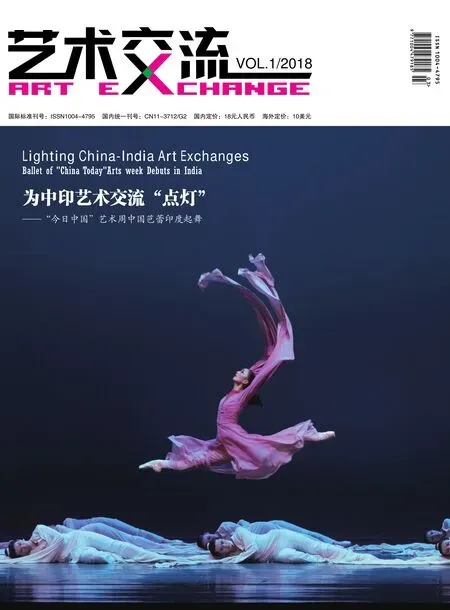如何让活动常办常新?
——英国文化创意产业一瞥
文文海六 WEN Hailiu 图易小琦YI Xiaoqi
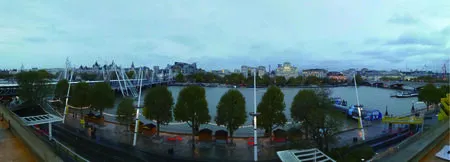
从南岸艺术中心可直眺泰晤士河Direct access of the Thames River from the South Bank Arts Center
为拓展中国文联系统艺术创意人才的思维,提升创新能力,加深对英国文化艺术创意产业经验的了解,提高中国文联对外文化传播的影响力及中华优秀文化走出去的成功率,由中国文联国际联络部和中国文联文艺研修院共同主办的中国文联赴英艺术创意人才高级研修班于近日在英国举办。英国在文化创意产业发展方面的国际化视野、卓越的追求与执行力、对节庆的开发利用和提升产业效益的思路方法,都对中国的同行业者启迪颇深。
政府、基金会、公司:产业构成元素
英国非营利性文化创意产业机构的经费来源主要靠政府资助、基金会、公司赞助以及机构的自我商业营销等多种渠道。政府依靠艺术理事会来给各个文化创意机构提供资金支持;机构在经费不足的情况下,可以寻求公司的赞助和基金会的捐赠。但基金会的捐助在英国饱受争议,其主要原因是不论个人基金还是公司基金都带有很强的指向性和目的性,都想通过捐赠和资助来提高个体或公司的声誉、名望,从而影响了艺术的专业性和独立性。
英国政府为了鼓励公司赞助非营利性的文化创意机构,提供了企业赞助公益税收减免政策,这弥补了政府对公共事业的经费投入不足,保证了文化创意产业的经费来源。但这个政策也带来了一些弊端:企业的赞助使得越来越多的商界人士进入了文化创意产业,而文化创意产业更需要的是懂艺术的人。有些艺术机构的董事会甚至会出现企业家占比超过50%的情况,所以这样的政策其优势和劣势显而易见。
对文化创意产业接受赞助的抗议和批评言论在英国并不少见,以“解放泰特”这个由艺术家组成的环保抗议组织抗议英国BP石油公司赞助泰特美术馆为例,大部分抗议者觉得文化创意机构要对赞助商进行道德上的选择,不能让有问题的公司通过赞助来获取公众的认可。
英国政府主要通过文化政策的制定对文化创意产业进行干预,例如对电影受众按年龄进行分级,对文化创意产业实行税收减免等激励政策等。另外,在引进国外文化创意团队时,还会在税收减免政策的基础上提出符合英国文化发展的要求,如制作地要在英国本土、参与人员要招聘英国人等。尽管这类限定会导致部分团队望而却步,但这的确是英国政府通过政策来控制文化创意产业和推广英国文化的有效途径。
当然,执政党的更迭会使英国政府在文化政策上出现很多变动。政府出资赞助,是为了吸引更多的私人赞助和企业赞助,因为文化创意产业要展现出自己的价值才能够获得来自政府的资助,但是政府和文化创意机构的看法是不同的,因而政府如何衡量文化创意价值就尤为重要。政府下设的艺术理事会为艺术机构提供资金,他们主要是通过观众数量、从业人数、投入和产出来衡量机构价值。但艺术机构衡量自身价值的标准和政府不同,主要从美学艺术的角度来衡量,但是艺术机构为了获得资助就要提高政府认可度,就会忽视文化价值标准,但文化的价值是内在的、艺术的,这是区分它和其他行业的核心。
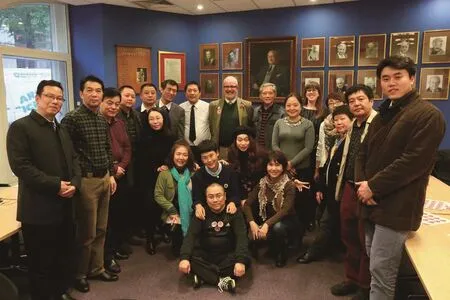
学员参观苏格兰国家剧院道具仓库Participants visit the Props Warehouse of Scottish National Theatre
慈善与非营利:文创组织
英国文化创意组织有数百家,它们都是带有慈善性质的非营利机构,英国的文化创意产业发展主要由这些机构推动完成。
英国电影协会(BFI)成立于1933年,管理英国电影国家档案,组织电影节和电影教育培训,负责英国的电影制作和发行。BFI与其他机构一样面临政府经费的缩减。此前BFI的主要收入是门票,现在他们开始利用自己的实体资产、员工的技能创意和自身品牌创造收入。BFI在对现有员工进行培养提升的同时,开始雇佣有商业背景的员工。此外,BFI还开发了在线电影观看平台,并出版专业杂志和书籍等。
英国音乐家协会(ISM)成立于1882年,它是具有慈善性质的职业协会组织,并成立了信托基金会。ISM目前拥有个人会员8500名,分学生会员、毕业生会员和正式会员三种类型。ISM致力于会员的发展规划与扶持,通过赠刊、电邮、网站、社交媒体与会员保持密切联系,其法律援助对会员最具吸引力。会员入会后,就多了一种归属感和安全感。同时ISM还拥有170个企业会员,BBC和南岸艺术中心是其中的典型代表。
英国皇家文学学会(RSL)成立于1820年,学会的宗旨是促进英国的文学发展,让越来越多的人从事文学创作。学会共有523名院士,皆为作家。皇家文学学会的主席、理事会理事都是由院士选举产生。英国皇家文学学会在法律上属于注册慈善机构,其任何工作都必须符合政府的监管要求,但他们不接受任何政府拨款,只面向社会筹款。这些钱主要用于创作交流和著作出版,给作家发放奖金,举办公共活动和年会等。学会不是皇家读写协会,也不是皇家作家协会,其核心目的是让公众更多地认识到文学的价值。
英国演艺人员独立工会(EQUITY)成立于1930年,目前拥有4.3万会员。这是一家为来自电影、电视、音乐、舞蹈、戏剧等文化艺术界的演员提供服务的工会组织。他们的管理和服务范围包括:为演艺人员争取尽可能多的政策支持,做到最大限度的保护,包括法律援助、协议合同维权、薪酬交涉,及退休后的养老金问题等。如果演艺人员和工会之间产生分歧,工会内部还设有投诉部门,协调解决合理诉求,若得不到满意结果,他们还可以向国家的仲裁法庭申请仲裁。
理念、人才、政策、专业:成功之道
30年或50年前,英国的世界地位不言而喻,很多方面影响了世界,而早期的工业革命给英国带来了超一流的发展;而今,他山之石,可以攻玉,通过英国创意产业的成功之道,中国同行也可以在实践中找到真理,在沟通中得以进步。
在理念方面,英国文创产业提出了“随着人类寿命的增长,人们可以更好地享受艺术,未来的科技也会支持文化艺术”的发展理念。一些非营利机构也通过购买音乐、电影、摄影等艺术作品的方式,取得经济收益,收获发展动力。同时,英国未来将有更多岗位来自文化创意行业,一些非营利的文化创意机构,他们在创新环境方面寻求可持续发展,加之政府使得文化创意的价值每年不断增长,尤其是在商业人才的培训方面。英国政府在2004年就提出要支持文化创意人才,并拿出钱来支持文化创意项目,邀请文化创意工作者到其他国家学习。
在政策方面,政府为企业、大学和继续教育等机构提供政策支持,如为音乐家协会、皇家文学院、电影协会等非营利性机构提供了相关的优惠政策。创意产业联盟作为有代表性的集创意产业、文化教育和艺术为一体的全国性机构,是一个完全独立的非营利性行业组织,拥有1000多个行业成员单位。该联合会与各级政府保持紧密合作,为政府在创意产业领域提供政策建议,也通过举办各类活动增加了创意产业机构之间的沟通与交流。相应的,很多非营利文化创意机构的人才都有相关学位,但文化创意产业的变化比大学课程的改变要快得多,技术发展也给英国提出很多挑战。很多机构开始开设文化创意产业课程,学科涵盖了方方面面的文化创新创意。英国一些非营利文化创意机构,在文化创意方面世界领先。如广告、建筑、博物馆、摄影视觉艺术等文化创意行业每年创利达840亿英磅,是英国增长最快的行业。据统计,在英国有9%的人在文化创意领域工作,全球的文化创意服务贸易额每年都呈上升趋势,并成为其软实力,英国政府也愿意为提升软实力加大对人才的投资。

英国音乐家协会(ISM)宣传海报ISM Poster
案例1:南岸艺术中心
位于伦敦泰晤士河南岸的伦敦南岸艺术中心是英国最大的艺术中心,每年举办超过5000场活动,吸引近900万名艺术家参与,其节日项目涵盖戏剧、舞蹈、音乐和文学等多个门类。南岸艺术中心主要包含三座建筑:南岸的古典音乐中心——皇家节日音乐厅、南岸的现代音乐中心——伊丽莎白女王音乐厅,及常年举行各种表演、展览的海沃德美术馆。1951年,伦敦泰晤士河南岸被重新定义,这里成为了艺术和文化的聚集地,南岸艺术中心特指当年政府划出的一片面积21亩的区域,主要为了促进“二战”之后人们对于艺术的兴趣。
作为欧洲最大的艺术中心,其创建的宗旨就是让人们走出战争的阴影,帮助人们重新振奋精神,接受教育,开始美好生活。南岸坚信艺术有力量改变生命,坚信艺术应该让所有人共享,希望通过努力给民众的精神生活带来改变。
南岸是英国资金最为充裕的机构之一,经费中40%来自政府拨款,其余部分来自门票收入等。南岸还积极与商店、餐馆、赞助商等合作,建立良好的商业伙伴关系,也接受个人捐赠,借助信托和基金会的方式实现多种经营。这种灵活多样的经营方式为南岸赢得了充裕资金,保障了南岸文化创意活动的开展,保障了南岸的良性运行。
南岸的员工有专职员工和兼职员工,有时也招募志愿者。这种用人方式可以有效地节约成本,同时还保证了实施者的参与热情。他们会思考自己的竞争者是谁,绝不自满,积极探索,以创新和创意提高自己的品质和辨识度,不断更新自己,淘汰老旧,使得活动能够常办常新。

南岸中心女王音乐厅内正在进行排练On going rehearsal at the Queen Elizabeth Hall in South Bank Arts Center
案例2:爱丁堡艺术节
爱丁堡节庆项目闻名全球,它有12个重要且知名的节日,主要包括爱丁堡国际科技节、音乐节、电影节、图书节、戏剧节、儿童狂想节、艺穗节等,这些给地域面积不大、资源也并不丰富的爱丁堡带来了新的生长点,也带来了经济的绿色、生态、可持续发展。艺术节是爱丁堡文化软实力的重要载体,是爱丁堡与他国建立外交关系的国家战略。艺术节在提高经济收入的同时,还通过文化的力量,吸引精英人才来爱丁堡居住,推动文化创意产业的发展,塑造了爱丁堡快乐友善、充满活力、富有文化的爱丁堡品牌形象。
爱丁堡艺术节的成功,源于对人性和世界的发展趋势进行理性思考。全球的最大趋势是都市化,人们将期待从某个国家的某个城市前往另一个国家的某个城市,既有自然景观,又有人文精神的国家和城市将成为他们的选择。随着手机的普遍应用,人们更加渴望到现场看演出,渴望聚集到一起,这是人类的本性。一方面是数字化的发展,一方面回归人类本性,节日活动就是一个不错的选择。
成功同时来自充分的市场调研。艺术节的一切规划都来自于市场调研和具体的数据分析,认真思考历史的、现有的资源,品牌的特色、消费者的需求、活动愿景等,注重品牌的辨识度,使12个品牌项目各有特色,同时又交相辉映,共同发展;其中一大亮点是消费者可以参与活动策划。比如儿童狂欢节,邀请儿童直接参与策划,切实保证了活动的参与度。同时,内部员工和外部人力相结合,根据活动的脉动性特征,和相关机构进行合作,招募兼职员工和志愿者,可以借力发展。这种用人方式可以有效地节约成本,同时还保证了实施者的参与热情。
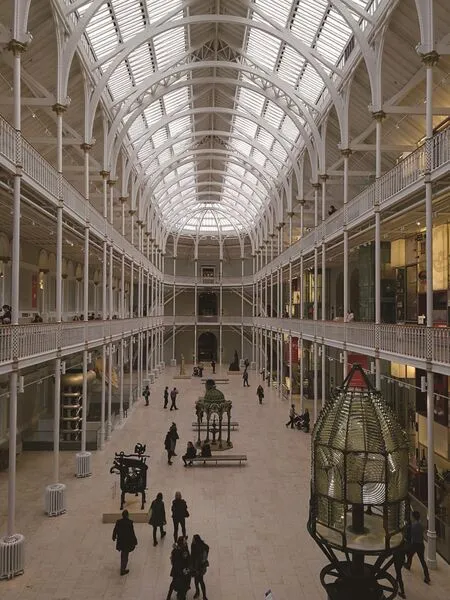
苏格兰国家博物馆一景Scene of National Museum of Scotland
In order to expand the thinking of creative talents of China Federation of Literary and Art Circles (CFLAC) and its group members, enhance innovative abilities, deepen the understanding of British cultural and creative industries, improve the CFLAC’s influence on international cultural communication and the success rate of outstanding Chinese culture’s Goingout, a senior seminar of CFLAC’s creative talents of arts in Britain jointly hosted by the organization’s International Cooperation Department and its Academy of Literature and Art has been held in the United Kingdom. Britain's vision of internationalization in the development of cultural and creative industries, its pursuit of excellence and executive power, its ideas and methods of developing and utilizing festivals and enhancing industrial benefits all cast enlightenment on its Chinese peers.
Government, Foundations, Corporations: Elements of Industry
The funding sources for nonprofit cultural and creative industries in the United Kingdom mainly rely on government funding,foundations, corporate sponsorships and institutional selfmarketing amongst others. Meanwhile, the government relies on art councils to fund all cultural and creative institutions; agencies can look for corporate sponsorships and foundation donations in the face of under-funding. However, the foundation's donations are quite controversial in the UK, the main reason of which is that both individual funds and corporate funds are highly directional and purposeful. They all want to raise the reputation and fame of individuals and companies through donations and grants with purpose of affecting the professionalism and independence of art.In order to encourage companies to sponsor nonprofit cultural and creative institutions, the British government has provided corporate sponsorship of public welfare tax relief policies, making up for the lack of government funding for public utilities and guaranteeing the funding sources for the cultural and creative industries. However, this policy has also brought some drawbacks:the corporate sponsorship has enabled more and more business people to enter the cultural and creative industries, while the industries need more people who understand the arts. The board of some arts organizations may even have more than 50% of the directors from business field in the board, so their advantages and disadvantages are undoubtedly obvious.
将以上两项改进成果投入生产后,通过反复的现场试验,均达到了预期效果,各个易磨损部件的使用时间明显变长。其中盘根的使用时间由原来的30d变为90d;柱塞的使用时间由原来的70d变为130d;铜压套的使用时间由原来的70d变为130d。
Protests and criticisms of sponsored cultural and creative industries are not uncommon in the United Kingdom. Taking the Liberation of Tate, an environmental protest group composed of artists to protest the BPT's sponsorship of the Tate's Art Museum for example, most of the protesters think that the cultural creative agencies have to make moral choices about sponsors and should not allow problematic companies to get public recognition via sponsorship.
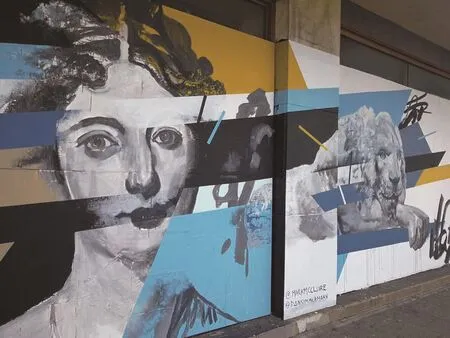
伦敦的街头涂鸦Graffiti in London
The British government mainly intervenes in the cultural and creative industries through the formulation of cultural policies,including grading the film audiences by age and implementing tax incentives such as tax credits for cultural and creative industries.In addition, it would, on the basis of tax relief policies, propose requirement in line with the development of British culture in the introduction of foreign cultural and creative teams, such as the production site should be in the United Kingdom, British citizens should be recruited in participation and so on. Although such a restriction can be prohibitive for some teams, it is indeed an effective way for the British government to control its cultural and creative industries and promote the British culture through its policies.
Of course, the change of the ruling party will cause the British government to make many alterations in its cultural policies.Government-sponsored funding is intended to attract more private and corporate sponsorships, because cultural and creative industries have to show their own value to receive funding from the government. However, the views of the government and cultural and creative institutions are most different. Therefore,how the government measures the value of cultural and creation is particularly important. The art council, set up by the government, provides funding for arts organizations, who measures institutional value primarily through the number of audiences, employees, inputs and outputs. However, the standard of art institutions to measure their own value is different from that of the government, which is mainly from the perspective of aesthetics. However, in order to obtain subsidies, art institutions must increase their recognition of the government and ignore the standard of cultural values. However, the value of culture is intrinsic and artistic. This is the core that distinguishes it from other industries.
Charity and Nonprof i t: Cultural and Creative Organizations
There are hundreds of cultural and creative organizations in the UK, all of which are charitable nonprofit institutions, which mainly drive the development of British cultural and creative industries.Founded in 1933, the British Film Institute (BFI) manages national archives of British cinema, organizes film festival and film education and training and is responsible for the production and distribution of British films. Like many other agencies, BFI faces the same issue as government’s reducing spending. Prior to that,BFI's main income is tickets, and now they began to use their own physical assets, employees’ creative skills and own brands to generate revenue. BFI began hiring employees with business background while nurturing existing staff. In addition, BFI has developed an online movie viewing platform and publishes professional magazines and books.
Founded in 1882, the Incorporated Society of Musicians (ISM) is a philanthropic professional association and has formed the Trust Foundation. ISM currently has 8,500 individual members, divided into three types as student members, graduates members and the formal membership. ISM, committed to the development planning and support of its members, maintains close contact with its members through subscriptions, emails, websites and social media, and its legal aid is most attractive to its members.After joining the membership, members have more of a sense of belonging and security. Meanwhile, ISM also has 170 corporate members, the BBC and South Bank Arts Center are the most typical representatives.

英国电影协会(BFI)IMAX影院外的大屏广告Large-screen Advertisement of IMAX Cinema of BFI
Founded in 1820, the Royal Society of Literature (RSL) aims to promote the development of British literature and make more and more people engaged in literary creation. The total of 523 academicians of the society is writers. Its chairman and Council members are elected by the academicians of the RSL.The RSL, which is legally a registered charity, must comply with government regulatory requirements for any of its work.However, they do not accept any government funding, but fundraising only from the community. The money is mainly used for creative exchange and publication of works, bonuses for writers,public events and annual meetings and etc. The RSL is not a royal reading and writing association, nor the royal writers association.Its core purpose is to make the public more aware of the value of literature.
EQUITY, founded in 1930, currently has 43,000 members. This is a union organization that serves actors and actresses from the cultural arts circles, such as film, television, music, dance, theater and the like. Their management and services include: enforcing as many policy support as possible for entertainers to maximize their protection, such as legal aid, contractual rights protection,payment negotiation, retirement pension and so on. If there is any disagreement between the entertainers and the trade union, there is a complaints department within the trade union to coordinate and settle the reasonable demands. If there is no satisfactory result, they may apply to the national arbitration court.
Some thirty or fifty years ago, the international position of the United Kingdom was self-evident and affected many aspects of the world. The early industrial revolution brought superb development to the country. Today, by other's faults, wise men correct their own. Through the success of the industry, their Chinese counterparts can also find the truth in practice to acquire improvement through communication.
In terms of philosophy, the cultural and creative industries in the United Kingdom put forward the development concept that"People can enjoy arts better as their life expectancy grows,and technologies for the future will support cultural and artistic development." Some non-profit organizations have also made economic gains and rejuvenated their development momentum by purchasing works of art, such as music, movies and photography etc. In the meantime, the UK will have more positions coming from cultural and creative industries, and non-profit cultural and creative institutions seek sustainable development in the innovative environment. In addition, the government keeps increasing the value of cultural creativity every year, especially in the training of business professionals’ aspect. In 2004, the British government proposed to support cultural and creative talents,and put out money to support projects in this regard, inviting cultural and creative workers to study in other countries around the world.
In terms of policy, the government provides policy support to businesses, universities and continuing education institutions,such as relevant preferential policies for ISM, the Royal College of Arts, Film Association and other non-profit organizations. As a representative nationwide agency integrating creative industries,cultural education and arts, the Creative Industries Alliance is a completely independent non-profit trade organization with more than 1,000 corporate members in the industry. The organization maintains close cooperation with all levels of government and provides policy advice to the government regarding the creative industries. It also increases the communication and exchanges between creative industries and institutions through various activities. Accordingly, many non-profit cultural and creative organizations have talents with relevant academic degrees,but the changes of cultural and creative industries are much faster than those in the university curriculum, technological development has also generated many challenges for the UK.Many institutions began to open courses regarding the cultural and creative industries, with disciplines covering all aspects of cultural innovation and creativity. Some non-profit British cultural and creative institutions maintain the leading role globally in this regard. The cultural and creative industries, such as advertising,architecture, museums and photographic visual arts create a net profit of 84 billion pounds a year, making them the fastestgrowing industry in the UK.
Case 1: Southbank Centre
London's Southbank Centre, on the south bank of the River Thames, is the UK's largest arts center, hosting more than 5,000 events each year and attracting nearly 9 million artists, with programs featuring theater, dance, music and literature and etc. The organization is comprised of three main buildings: the classical music center on the south shore, the Royal Festival Hall,the modern music center Queen Elizabeth Hall, and the Hayward Gallery showcasing year-round performances and exhibitions. In 1951, London's south bank of the Thames was redefined as an art and cultural gathering place. The Southbank Centre specifically refers to a 21-acre area designated by the government during the year to promote people's interest in the arts after World War II.
As Europe's largest art center, its purpose is committed to creating a vision of driving people out of the shadow of war and helping them get re-inspired, receive education and start a better life. The Southbank is firmly convinced that art has the power to change lives and that art should be shared by all, hoping that it will bring about changes in people's spiritual life through its endeavors.
Southbank is one of the most well-funded institutions in the UK,with 40% from the government, and the rest from ticket sales.Southbank is also actively establishing cooperation with shops,restaurants, sponsors and others, creating a sound business partnership. It also accepts individual donations, achieving diversification through the use of trusts and foundations. This flexible and diversified mode of operation has won sufficient funds for the Southbank, guaranteeing the development of cultural activities and ensuring the benign operation.
The organization has both full-time and part-time employees,and volunteers are recruited from time to time. This method of employment can effectively save costs, but also ensure the enthusiasm of the participants in implementation. They will think about who their competitors are. They will not be complacent, and explore actively, improving their quality and recognition through innovation and creativity, constantly updating themselves,eliminating obsolescence and maintaining events ever-innovative.
Case 2: Edinburgh Art Festival
The Edinburgh Art Festival is best known around the world for its 12 important and well-known festivals, including Edinburgh International Festival of Science and Technology, Music Festival,Film Festival, Books Festival, Theater Festival, Children's Fantasy Festival, Fringe Festival etc. These give Edinburgh, a city with not large area and relatively sterile in resources, a new point of growth, the green economy, ecological and sustainable development. The festival is an important carrier of Edinburgh's cultural soft power and a national strategy for establishing diplomatic relations with other countries. While increasing economic income, the festival also attracts elites to come and settle in Edinburgh and promote the development of the cultural and creative industries through power of culture, shaping its friendly,vibrant and cultural brand image.
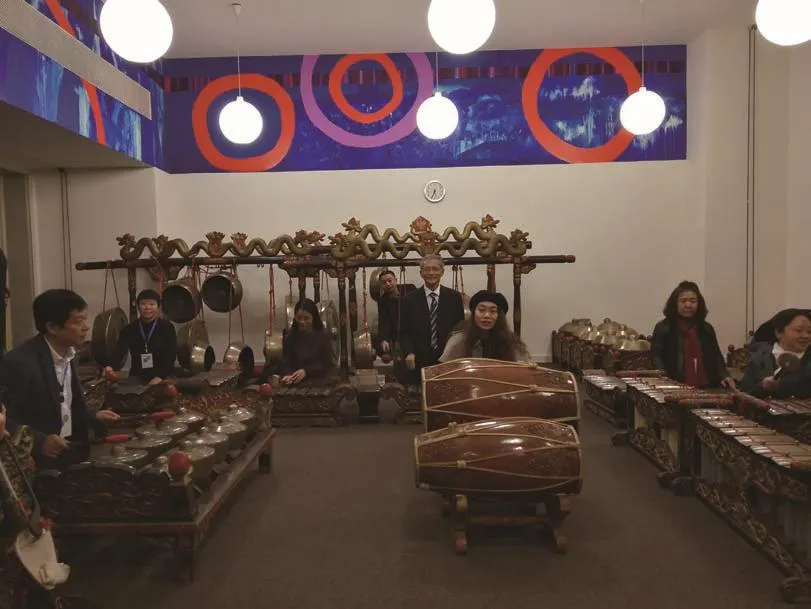
学员在伦敦南岸艺术中心体验互动项目Participants experience interactive projects at the South Bank Arts Center in London
The success of the Edinburgh Art Festival stems from rational thinking about the trends in human nature and the world. The largest trend in the world is urbanization. People will look forward to traveling from one city of a country to another of some other country. Countries and cities with both natural scenery and humanistic spirit will be their choices. With the general application of mobile phones, people are more eager to go to watch live performances, gathering together, this is human nature. On the one hand, it witnesses digital development; on the other, return to human nature.And a festival activity is quite a good choice.
Success comes from comprehensive market research. All the planning of the festival comes from market research and specific data analysis, seriously considering the historical and present resources available, brand characteristics, needs of the consumers, the vision of the activities etc., paying much attention to the brand recognition and making the 12 brand projects with its own unique characteristics while at the same time adding value to each other for common development. One of the major highlights is that consumers can participate in the planning of events. Taking the children's carnival for example, children are invited to participate directly in the planning, effectively ensuring the participation of the event. In the meantime, with the combination of internal staff and external manpower and the cooperation with relevant agencies based on the fluctuating nature of the activity, it can recruit part-time staff and volunteers and lend strength to development. This method of employment can effectively save costs, which maintaining the enthusiasm of the participants in implementation.

